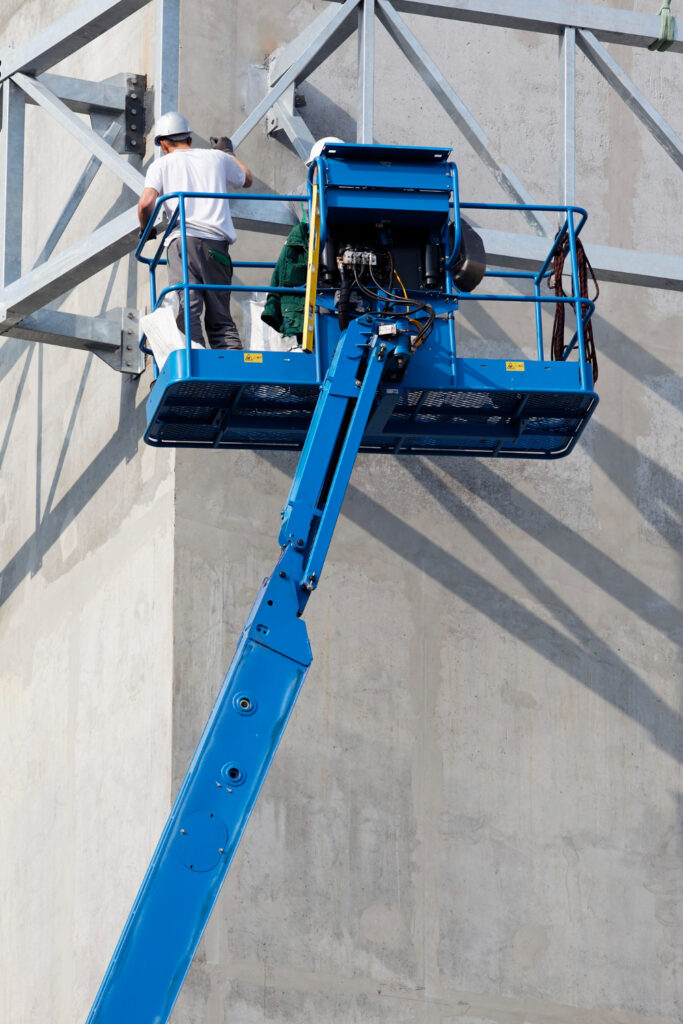The choice of equipment primarily contributes to safety and efficiency when it comes to work at height. Most of the choices always boil down to spider boom lifts and traditional aerial lifts. Each has its unique advantages, but which is better for your particular needs? Understanding the key differences allows you to make an informed decision best suited to your project requirements.
What are Spider Lifts?
Spider boom lifts are a form of aerial boom lift characterised by having spider-like legs. These legs provide supreme stability on uneven terrains, hence they are ideal for outdoor projects. Additionally, spider boom lifts are compact and lightweight, making them accessible to places that might be too tight for traditional aerial boom lifts.
- Stability: Their spider-like legs give them unmatched stability, especially on uneven ground.
- Accessibility: Compact and small, they are easily passed through narrow openings, which is convenient to operate both indoors and outdoors.
- Weight: Due to their lightweight, the pressure the ground will also receive from spider lift is much smaller; this reduces the possibility of damaging delicate surfaces.
How Aerial Lifts Work: The Basics
Aerial boom lift is the generic term that comprises, among others, scissor lifts, boom lifts, and cherry pickers. Being able to work at heights, they are irreplaceable when construction or maintenance operations require working at heights.
- Types: Traditional aerial boom lifts come in a variety of models, each suitably designed for specific operations.
- Strength: These lifts are heavy-duty built and are hence useful in longer projects.
- Reach: Some traditional aerial boom lifts have greater reach vertically and are hence useful in situations where maintenance or construction work is performed at high-rise positions.
Comparative flexibility and versatility
A primary difference between spider boom lifts and other aerial boom lifts is the fact that they are more flexible and adaptable. With compact designs, spider boom lifts can work in various environments because of their adjustable legs. The adaptability of spider boom lifts comes into play in indoor, outdoor, or uneven-ground tasks where complex operations are performed.
By contrast, classic aerial boom lifts are meant for lower-demand projects. For example, in a case requiring scissor lifts for working at an elevated height on flat and firm ground, they are generally acceptable. This will not be the same on uneven surfaces, as a spider boom lift would provide more stability.
● Spider Lifts:
- Ideal for projects that require both indoor and outdoor conditions.
- Master a difficult surface.
- Compact design for confined areas.
● Traditional Aerial Lifts:
- Just suited for projects on flat and firm surfaces.
- Provides quite a few designs that suit the task at hand.
- Higher reach for high-rise projects.
Safety Considerations
With working at height, safety is of utmost importance; both spider boom lifts and traditional aerial boom lifts are designed with many features to maintain the operator’s safety. Spider boom lifts, by having wide bases and sturdy legs, do not tip over easily, particularly on uneven ground. Besides, their compact size cuts down the chances of collision in tight spaces.
These also feature many safety features, such as guardrails and stop buttons for an emergency situation. However, unstable ground does damage their performance capability, which, in fact, is not going to make them suitable for an outdoor project where the terrain might be uncharacteristically different.
● Spider Lifts:
- Stable on uneven terrain, with reduced risk of tipping.
- Compact design reduces the risk of collision.
● Traditional Aerial Lifts:
- Feature guardrails and emergency capabilities.
- Better suited for stable, flat surfaces.
Cost Considerations
In an evaluation of options between spider boom lifts and traditional aerial lifts, cost is usually a major concern. Spider boom lifts may be way too expensive to rent or buy out, in their speciality design and performance. This cost could be reasonably justified by the efficiency and safety that it offers in complex or varied work sites.
On the other hand, traditional aerial boom lifts generally are cheaper and easier to find. Whenever the projects do not call for the special aspects of a spider boom lift, traditional aerial boom lifts become the economical choice to take.
● Spider Lifts:
- Higher upfront cost; saves money on not needing extra equipment.
- Excellent working in complex environments requiring flexibility
● Traditional Aerial Lifts:
- Cheaper, especially to carry out simple, straightforward tasks
- Easier to find and rent or buy
Maintenance and Durability
Both spider boom lifts and traditional aerial boom lifts require periodic maintenance so that they can operate safely and efficiently. Spider boom lifts, because they are designed in a very complex way, might need more specialised maintenance, but their durability is the same as traditional lifts, hence they can withstand long-term use.
It’s normally easier to maintain traditional aerial boom lifts, as parts and service options are much more freely available. This is a plus for projects that require minimal equipment downtime.
● Spider Lifts:
- Design is complex with specialised maintenance.
- Long-lasting due to rugged design and reliability over longer-term projects.
● Traditional Aerial Lifts:
- Much simpler, less expensive maintenance.
- Readily available parts and service options
Environmental Impact
Consider the environmental impact of your equipment choice as a key factor. Being of lighter weight than other aerial boom lifts, spider boom lifts are lighter on the ground and exert less pressure on it; this diminishes the probability of harming sensitive environments. This makes them a better option for projects in parks, gardens, or natural settings.
Being heavier, traditional aerial boom lifts can result in higher ground pressure that may cause damage in sensitive environments. However, traditional lifts can still be used for settings where the impact on the ground is not a major concern.
● Spider Lifts:
- Low pressure on the ground translates to low environmental impact.
- Good for projects to be undertaken in natural or sensitive environments.
● Traditional Aerial Lifts:
- Much heavier and hence results in higher ground pressure.
- Best applied in industrial or urban areas.
Conclusion
Your project needs to determine whether a spider boom lift or a traditional aerial lift is more suitable. The spider boom lift excels in challenging or varied environments due to its flexibility, high weight capacity, and environmental sensitivity. Traditional aerial lifts are cheaper to buy and maintain but can easily handle simple tasks over level ground. Think about your project’s needs, your budget, and the environment in which you plan to work.






